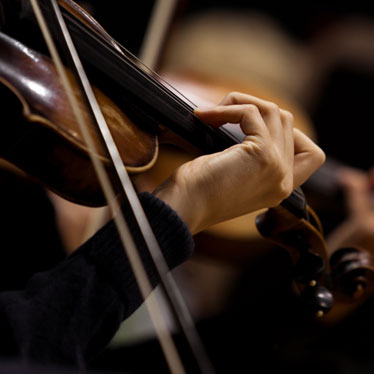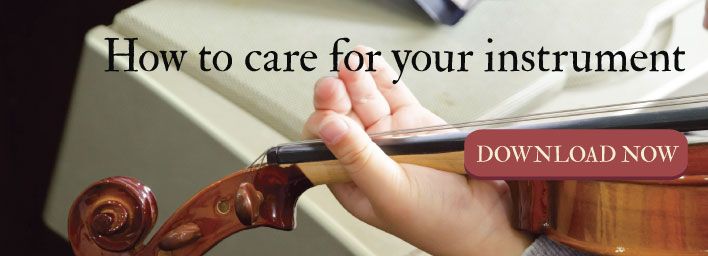Improving Finger Dexterity For String MusicianS

Are you passionate about playing your string instrument? Are you interested in becoming a better-than-average – or even great – musician? Then finger dexterity is key to your mission.
Not only does finger dexterity allow your fingers to whiz up-and-down, and side-to-side, across the neck of your instrument, the exercises required to improve dexterity are also integral to preventing overuse injury.
All that repetitive motion can do serious – if not permanent – damage to your fingers, not to mention wrists, forearms, neck and shoulders, if you aren't in good, physical playing shape.
Healthy Finger Dexterity Involves the Whole Body
Remember that old children's song, Skeleton Bones, that goes through and highlights how all the bones in the body are connected to one another? Musicians would do well to remember that your fingers are connected to your hand bones, which are connected to your wrist bones, which are connected to your radius and ulna bones, and so on.
Your body is a collective of individual parts so finger dexterity exercises should be approached as much from the macro- as from the micro-perspective.
Check out, 10 Tips for Better Finger Dexterity for traditional specifics regarding warm-ups and exercises that build finger dexterity. In the meantime, review the following for new ideas on how to build more sustainable finger dexterity, strength, and stamina.
Make sure you're playing a correctly-sized instrument
There is no rule that says teens and adults need to play full-sized instruments. In fact, if you're smaller in stature or have proportionally small hands/fingers for your size, playing a full-sized instrument could harm you because it strains the very muscles you want to support in order to promote healthy posture and finger/muscle dexterity.
Speak with your music instructor or visit a reputable music store, and verify that your instrument is correctly-sized for your frame, arms, fingers, etc.
Stretch and move your body every day
Stretching before practice time is important, but this isn't the only time to work on general muscle strength and flexibility. The more strong, flexible, and in-shape your body is in the general sense, the more apt it will be at withstanding the rigor of long practice sessions, rehearsals, and performances.
Do get at least 30-minutes of exercise, 5-days a week in order to keep your heart, and your stamina, in good shape. Yoga is also a wonderful exercise practice for musicians because in addition to promoting the whole-body approach to posture, breathing, strength, and flexibility – it also builds a stronger connection between your breath work and mindfulness, which is beneficial for musicians who suffer from performance jitters or anxiety.
Read, 6 Best Yoga Positions for Violinists, for specific information about yoga poses, postures and stretches that benefit string musicians.
Don't forget the little guy
Unless you played piano, odds are you didn't think very much about your pinky before you started playing a string instrument. All of a sudden, the littlest member of the finger family has a big job to do – and it's supposed to do that job quickly, nimbly, and accurately – sometimes requiring big stretches of space down or across the strings.
It's important to note that unlike the first-, second- and third-fingers, which lift and drop with the same curved shape – your pinky (the fourth finger) wants to flatten out or may lift and drop with different shapes. Combine that, with its weaker nature in general, and you can understand why that fourth-finger drives you nuts sometimes.
If a weak and/or collapsing pinky is the bane of your left-hand existence, try working on these exercises:
- Play left-hand pizzicato. It takes a lot of control to pluck a single string using only the third- and fourth-fingers, which makes it an excellent way to strengthen them. Create your own pizzicato plucking pattern or play with simple lines of music and insert pizzicato notes when you come across open strings in the music.
- Become a harmonics pro. Creating harmonics requires a light touch – usually using your third- or fourth-fingers – at very specific spots on the string. That light touch is deceiving because, while it may not require much effort, the precision required builds both strength and flexibility.
- Tap patterns on the table. Using numbers 1-4, correlating to respective fingers, write out tapping patterns utilizing ample 4s. Have a piece of music where the fourth-finger gives you trouble? Write it out in a numbered tapping pattern (1244242234...) and tap it out on tables/desks as if you're playing the piano. This exercise can be done anywhere and builds fourth-finger strength regardless of whether your instrument is present or not.
Paying attention to these lesser-shared advises for finger dexterity, along with the typical warm-ups and exercises recommended before and during rehearsals and performances, you'll support a healthier, whole-body approach to the physicality of musicianship. Now get that pinky tapping!


